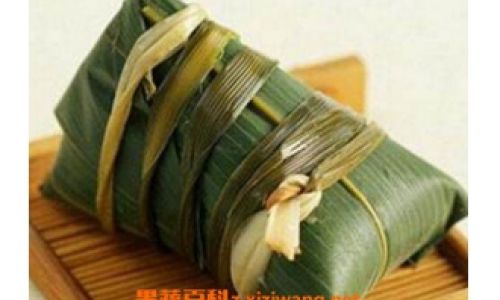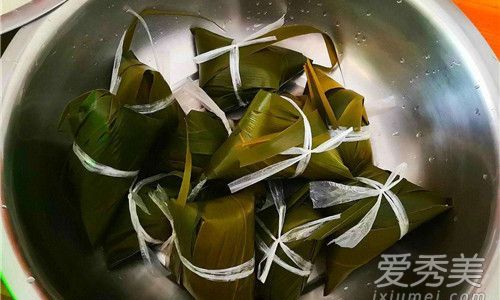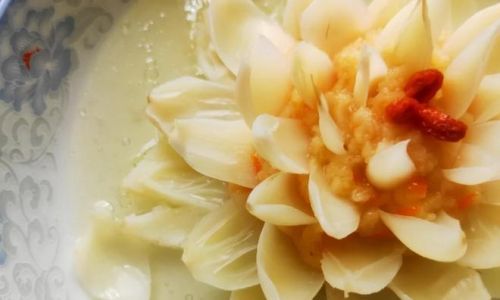Introduction
Zongzi, a traditional Chinese rice dumpling wrapped in bamboo leaves, has captured the hearts and palates of food enthusiasts worldwide. These pyramid-shaped treats, often filled with ingredients like glutinous rice, pork, beans, or dates, are a staple during festivals like Dragon Boat Festival. However, for those without easy access to freshly made zongzi, frozen varieties offer a convenient alternative. Cooking frozen zongzi properly is crucial to achieving the perfect texture—soft, sticky rice with melt-in-your-mouth fillings. This guide will explore the science behind cooking frozen zongzi, step-by-step methods, expert tips, and solutions to common pitfalls. Whether you’re a seasoned cook or a curious novice, this comprehensive resource will ensure your frozen zongzi experience is nothing short of delicious.
Understanding Frozen Zongzi
Before diving into cooking techniques, it’s essential to grasp why frozen zongzi requires special handling. Freezing preserves zongzi by halting microbial growth, but it also alters the structure of the rice and fillings. Glutinous rice, the primary ingredient, contains amylopectin, a starch that retrogrades (hardens) when cooled. This process is exacerbated by freezing, making the rice grains firm and less pliable. Similarly, fillings like meat or beans may become drier or denser after freezing. Proper cooking methods must reverse these changes without overcooking the exterior or undercooking the center.
Choosing the Right Cooking Method
Three primary methods exist for cooking frozen zongzi: boiling, steaming, and microwave reheating. Each has pros and cons, depending on time, equipment, and desired texture.
-
Boiling
Pros: Even heating, retains moisture, classic method.
Cons: Requires monitoring to prevent overcooking, longer time.
-
Steaming
Pros: Gentle heat preserves shape, prevents sogginess.
Cons: Slower than boiling, risks uneven cooking if not managed. -
Microwave
Pros: Fastest method, ideal for small batches.
Cons: Risk of uneven heating, can dry out rice.
Step-by-Step Guide to Boiling Frozen Zongzi
Boiling is the most recommended method for its ability to rehydrate and cook zongzi evenly. Follow these steps for perfection:
-
Preparation
- Do Not Thaw: Cook zongzi directly from frozen. Thawing can cause the leaves to tear or the filling to leak.
- Inspect Packaging: Remove any plastic or vacuum-sealed wrapping. Bamboo leaves are safe to boil.
- Rinse Lightly: Quickly rinse zongzi under cold water to remove ice crystals.
-
Selecting the Pot
Use a pot large enough to submerge zongzi completely. A 4–6 quart pot accommodates 4–6 medium zongzi. Avoid overcrowding, as this lowers water temperature and extends cooking time. -
Water Quantity and Temperature
- Fill the pot with enough cold water to cover zongzi by 2 inches.
- Why cold water? Starting with cold water ensures gradual, even heating. Hot water can shock the exterior, causing the leaves to split or the filling to burst.
-
Adding Zongzi
Gently place frozen zongzi into the pot. Ensure they are fully submerged. If necessary, weigh them down with a heat-safe plate to prevent floating. -
Heating Process
- Initial Boil: Bring water to a rolling boil over high heat. This typically takes 10–15 minutes.
- Reduce to Simmer: Once boiling, lower the heat to medium-low to maintain a gentle simmer. Avoid rapid boiling, which can rupture the leaves.
-
Cooking Time
Cooking time varies based on zongzi size and freezing method:- Small Zongzi (100–150g): 45–60 minutes
- Large Zongzi (200g+): 60–90 minutes
- Pro Tip: Add 10–15 minutes if zongzi were frozen without individual wrapping.
-
Testing for Doneness
- Texture Test: Carefully remove one zongzi and unwrap a corner. The rice should be glossy, soft, and stick together.
- Temperature Check: Insert a food thermometer into the center. Aim for 165°F (74°C) for meat fillings, 160°F (71°C) for vegetarian.
-
Resting Period
Once cooked, let zongzi sit in the hot water for 5–10 minutes with the heat off. This allows residual heat to finish cooking and soften the rice further.
Steaming Frozen Zongzi: A Gentler Approach
Steaming is ideal for preserving the zongzi’s shape and preventing sogginess. Follow these steps:
-
Setup
- Use a steamer basket or bamboo steamer lined with parchment paper to prevent sticking.
- Ensure the water level in the steamer pot is below the basket to avoid direct contact.
-
Arranging Zongzi
Place frozen zongzi in a single layer, spaced 1 inch apart. Avoid overcrowding. -
Steaming Time
- Small Zongzi: 60–75 minutes
- Large Zongzi: 75–100 minutes
- Tip: Add 5–10 minutes if stacking multiple layers.
-
Moisture Control
Check water levels every 20–30 minutes to prevent burning. Add boiling water if needed—cold water will lower the steamer temperature.
Microwave Method: Speed Over Precision
While convenient, microwaving requires caution to avoid dry, unevenly cooked zongzi:
-
Preparation
- Remove all packaging. Wrap each zongzi in a damp paper towel to retain moisture.
- Place on a microwave-safe plate.
-
Power Settings
Use 50% power (medium) to prevent overheating. High power risks scorching the exterior. -
Cooking Time
- Small Zongzi: 3–4 minutes per side (flip halfway)
- Large Zongzi: 5–6 minutes per side
- Caution: Let zongzi rest for 2 minutes after microwaving to redistribute heat.
Troubleshooting Common Issues
Even with careful preparation, problems may arise. Here’s how to fix them:
-
Undercooked Rice

- Symptoms: Hard, crumbly texture.
- Solution: Return to boiling water for 15–20 minutes. For microwaved zongzi, reheat in 1-minute intervals.
-
Burst Leaves
- Cause: Rapid temperature changes or overstuffing.
- Prevention: Thaw gradually (not recommended for frozen zongzi) or cook at a lower simmer.
-
Soggy Exterior
- Cause: Overboiling or inadequate draining.
- Fix: Reduce cooking time by 5–10 minutes. After cooking, let zongzi air-dry on a rack for 5 minutes.
-
Dry Filling
- Symptoms: Meat or beans are crumbly.
- Solution: Add a tablespoon of broth or sauce to the cooking water for added moisture.
Enhancing Flavor and Texture
Elevate your frozen zongzi with these creative tweaks:
- Aromatic Broth: Replace plain water with chicken or vegetable broth for added depth.
- Herb Infusion: Add a bay leaf, star anise, or pandan leaf to the cooking water.
- Dipping Sauces: Serve with soy sauce, chili oil, or sweet bean paste.
- Garnishes: Sprinkle toasted sesame seeds or chopped scallions before serving.
Storing and Reheating Leftovers
Proper storage ensures leftover zongzi remain safe and tasty:
- Cooling: Let cooked zongzi cool to room temperature (1–2 hours).
- Packaging: Wrap individually in plastic wrap or place in airtight containers.
- Refrigeration: Lasts 3–4 days.
- Refreezing: Not recommended, as it degrades texture.
Reheating Methods for Leftovers
- Boiling: 5–7 minutes in simmering water.
- Steaming: 10–15 minutes.
- Microwave: 1–2 minutes on medium power with a damp paper towel.
Cultural Context and Variations
Zongzi’s origins trace back over 2,000 years to the Warring States period, when poet Qu Yuan’s death inspired locals to toss rice-filled bamboo leaves into the river to prevent fish from eating his body. Today, regional variations abound:
- Southern China: Savory zongzi with pork, salted egg yolk, and mushrooms.
- Northern China: Sweet zongzi with red bean paste or jujube.
- Indonesian/Malaysian: Bakchang with spicy meat and coconut milk.
- Japanese: Chimaki with sweet azuki bean paste.
Environmental Impact and Sustainability
Modern zongzi production often uses synthetic packaging, contributing to plastic waste. Opt for brands using biodegradable bamboo leaves or compostable wrappers. When cooking, reuse boiling water for soups or steaming vegetables to minimize waste.
Conclusion
Cooking frozen zongzi is a blend of science and art. By understanding the effects of freezing on ingredients, selecting the right method, and troubleshooting diligently, you can transform a frozen parcel into a culinary delight. Whether you prefer the timeless boil, the delicate steam, or the speedy microwave, patience and attention to detail are your greatest allies. As you savor each bite of perfectly cooked zongzi, remember that this ancient tradition continues to thrive, bridging cultures and generations one delicious dumpling at a time. Experiment with flavors, share with loved ones, and let the humble zongzi remind you that even frozen treasures can warm the soul.






0 comments